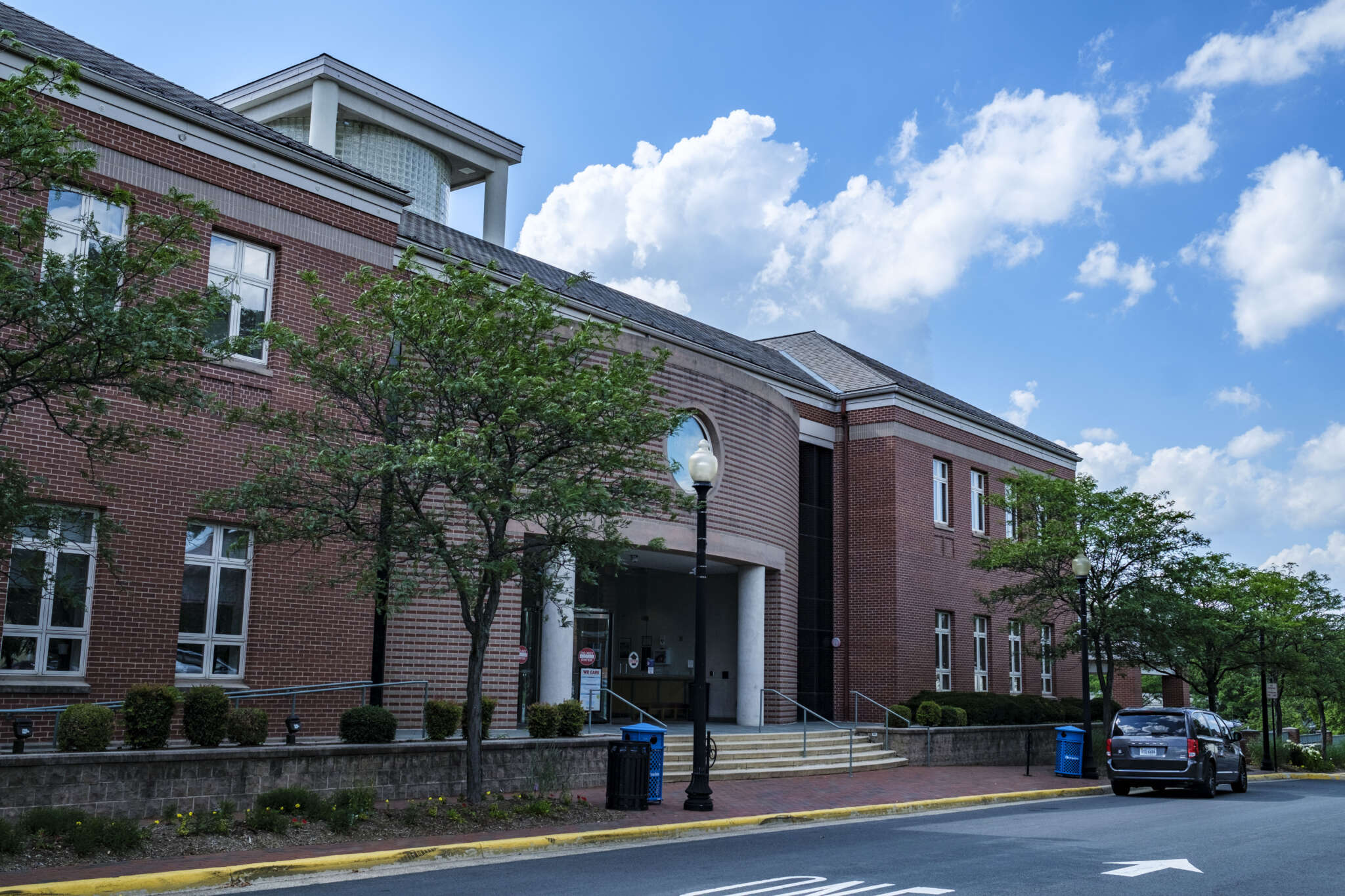
The Town of Herndon is exploring ways to offer more translation and interpretation services for Spanish-speaking residents.
Town staff are considering two contracts of up to $10,000 for one year to hire an interpreter who will be present at all town council public hearings and a translator for translating town publications, like the newsletter, flyers and other materials specific to the Spanish-speaking community, according to town spokesperson Anne Curtis.
The idea was discussed at a Herndon Town Council meeting on Aug. 2 in response to the town’s public engagement on the issue and its communications platforms.
Curtis said the town will evaluate the effectiveness of the services and determine future funding in fiscal year 2025, which will start on July 1, 2024.
Feedback from focus groups, particularly those for whom Spanish is a primary language, found that translation and interpretation services are needed to make town information more accessible to others.
“This is the area that we want to and need to focus on,” Curtis said, noting that the town has already begun posting flyers in laundromats, clinics and other areas.
Councilmembers Keven LeBlanc and Pradip Dhakal said the town could also explore using artificial intelligence for translation services.
“There are other tools that are pretty good at translation,” LeBlanc said.
Dhakal said he was pleasantly surprised by how accurately a derivative of the popular AI-tool ChatGPT translated content in his language.
Curtis noted that Google Translate has stopped servicing governments — with the exception of schools.
The costs would likely be covered by contingency funds, according to town manager Bill Ashton II.
Ashton II said the town could learn from how larger jurisdictions like Fairfax County are using AI for translation services.
Most jurisdictions comparable in size to the Town of Herndon do not offer dedicated translation services, Ashton II said.
The Town of Vienna has no formal policy for translation and interpreter services. Falls Church City and the Town of Leesburg offers ad hoc translation services. The City of Manassas hired a full-time individual for translation and interpretation services in fiscal year 2022.
More than 70 employees in the town are fluent in a language other than English, and the Herndon Police Department has a language advance pay-step for sworn officers. Human resources staff are working on a language premium policy for non-sworn town staff.
The effort comes after the town completed a major redesign of its website earlier this summer.
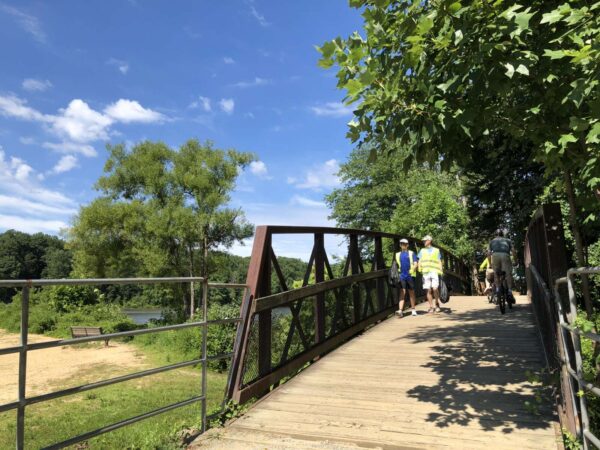
The Fairfax County Park Authority wants feedback on a draft plan to make county parks more equitable and accessible.
County staff is collecting input on its Parks, Recreation, Open Space, and Access (PROSA) Strategy through an online survey and two virtual workshops scheduled this month. The second round of community engagement comes as the FCPA prepares to finalize the strategy later this year.
FCPA Director Jai Cole said the strategy will guide the park authority toward improved accessibility, park equity, and a “stronger balance of park experiences countywide.”
“The cutting-edge research which we’ve undertaken, coupled with the valuable insights we’ve received by way of community input, will be invaluable tools in our work to ensure equitable access to our park system,” Cole said.
According to the county, top priorities of the draft PROSA report include:
- Ensuring all community members have access to FCPA parks within a 10-minute walk
- Enhancing access to “complete park experiences”
- Enriching habitat connectivity between environmental corridors
- Analyzing and prioritizing recreation needs and projects with an equity lens, as required by the county’s One Fairfax policy
According to the report, approximately 52% of residents have access to a county park within a 10-minute walk from their home.
Emphasizing its vision of ensuring residents can get to a park without driving, the report states that barriers can include the presence of large roadways with limited pedestrian crossings, a lack of sidewalks, remote park entryways and natural features, such as a stream or forested area.
“Opportunities to remove barriers and improve park access range from adding a trailhead or a new park entrance where feasible, to partnering with an agency to add a crosswalk, or acquiring parkland,” the PROSA report says.
Enhancing accessibility is also about improving the access visitors have to active, “passive,” social and natural or cultural recreation, according to the report, which proposes that the park authority develop parks with limited activities, acquire parkland, and collaborate with other public agencies to achieve its goal.
The objective of enriching habitat connectivity is centered on preserving and enhancing the county’s current and future natural environment.
“Improving habitat connectivity is a critical strategy for addressing habitat loss and fragmentation, a top threat to biodiversity,” the report reads.
The FCPA will identify sites where habitat health could improve, plant trees to bolster area with lower tree canopy, and consider opportunities to improve habitat connectivity when acquiring parkland.
The report commits the park authority to considering “racial and social equity and population density when prioritizing park and recreation needs and projects in order to diminish racial and social inequities within our community.”
The first round of community engagement on the PROSA strategy wrapped up last fall. The virtual workshop for the second round of community engagement is scheduled for July 18 and July 25. Comments through the online survey will be accepted through Aug. 6.
Registration for the online survey and workshops is available on the PROSA webpage.
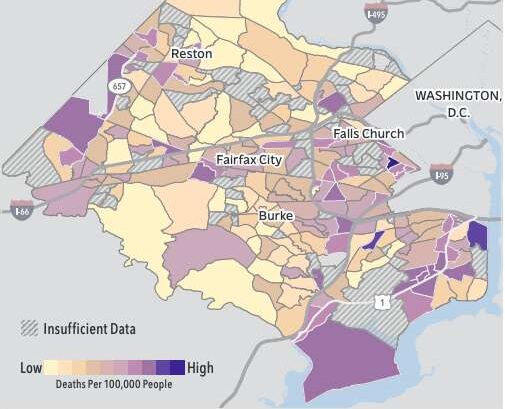
Black residents have experienced worse health outcomes than other populations across Northern Virginia, especially during the COVID-19 pandemic, a new report found.
Commissioned by the Northern Virginia Health Foundation (NVHF) and conducted by the Center on Society and Health at Virginia Commonwealth University, the Fairfax County section of the “Dying Too Soon” report found “stark” disparities across the county in the rates at which people die before the age of 75.
The report attributed the dramatic differences in life expectancies — from 76.5 years to 91.1 years — to an individual’s race, ethnicity and address, reflecting the influence of socioeconomic conditions on health outcomes.
According to the report, a lack of access to health care contributed to 66% of premature deaths in the county from 2015-2019 that were avoidable with preventative measures or treatment.
Throughout Northern Virginia, premature deaths are more concentrated within “islands of disadvantage,” where residents experience poor living conditions, higher mortality rates, and food and housing insecurity, the report says.
Residents of these neighborhoods are more likely to be people of color and immigrants, a disparity resulting from “the region’s history of segregation and systemic racism” and policies that “systematically block access” to health opportunities and increase exposure to unsafe health conditions, the report said.
Prior to the pandemic, Black people in Fairfax County had a premature death rate of 221.0 per 100,000 residents, exceeding the rates for white people (165.8 per 100,000), Hispanics (126.2 per 100,000) and Asians and Pacific Islanders (112.4 per 100,000).
Those disparities were consistent throughout the region, which “exhibits smaller racial-ethnic disparities” that other parts of the U.S., according to the report.
Though Fairfax County is often touted as one of the richest counties in the U.S., with a median income of $133,974, many of the wealthiest census tracts are located just a few blocks from islands of disadvantage.
In fact, the study says one census tract in Springfield has a premature death rate twice as high as that of a census tract in Franconia only two miles away. Each census tract also showed drastically different education and poverty rates and racial and ethnic compositions.
“I don’t think there’s a sense among the general public that these kinds of health inequities exist in a wealthy area like Northern Virginia, which in aggregate is doing quite well and has a very high quality of life,” Dr. Steven Woolf, lead study author and director emeritus of VCU’s Center on Society and Health, told FFXnow. “But when you zoom in like this to see what’s actually happening, neighborhood by neighborhood, you expose these these pockets of disadvantage that we want the public to know about.”
Census tracts with the highest premature death rates were in Seven Corners/Bailey’s Crossroads and Route 1 regions, according to the report’s summary. The study also reported that poverty rates in Seven Corners/Bailey’s Crossroads, Mount Vernon and Oakton “exceeded 20%, higher than poverty rates in countries like Estonia, Lithuania, Peru, Tajikistan, and Uganda.”
The Covid pandemic only worsened inequitable health outcomes, according to data collected in 2020-2021. The report says the county’s islands of disadvantage “experienced higher COVID-19 death rates,” and Northern Virginia as a whole saw “much higher” death rates among Hispanic and Black populations compared to Asian and white groups. Read More
The City of Falls Church has officially decided to reinvest in a 10-block commercial area that encompasses the largest Vietnamese shopping center on the East Coast.
On Monday, June 26, Falls Church City Council unanimously voted to approve the East End Small Area Plan, which proposes reinvestment into a series of commercial properties — including the historic Eden Center (6751-6799 Wilson Blvd) — between Wilson Blvd, East Broad Street and Hillwood Avenue.
The council’s vote comes after the planning commission endorsed the plan on June 7.
With the East End as the last of eight planning areas deemed “underutilized” and in need of reinvestment under the city’s Comprehensive Plan, the council’s vote serves as the long-awaited culmination of two years of dedicated community outreach and organizing.
After the plan was publicly launched in the fall of 2021, local Vietnamese organizers formed Viet Place Collective and worked extensively with the city to craft a plan that adequately represented the thriving Vietnamese community set to be the largest group affected by reinvestment initiatives.
The grassroots organization was lauded by council members for building an unprecedented model of community engagement in local public policymaking that the city hopes to continue.
VPC’s activism continued at Monday’s meeting, where they urged the council to rename the district currently known as the “East End” or Planning Opportunity 5 to “Little Saigon East” in future city planning.
Eden Senior Vice President and General Counsel Alan Frank objected that the name Little Saigon would take away from Eden’s unique, globally recognized branding and cause the shopping center to lose its name recognition in a country full of “Little Saigons.”
“You say that calling the area Little Saigon is not the same as renaming Eden Center, but we’re talking about the same piece of land, so I think that’s not really right,” Frank said. “If we’re going to market something, we need to market it under one name. We need to attract tenants there under one name, and it’s got to be Eden Center located in the city of Falls Church.”
In response, VPC Core Organizer Hoài Nam Nguyễn clarified that the Eden name would not be under threat of replacement.
The shopping center would keep its trademarked name but belong to a new jurisdiction titled Little Saigon that Fairfax County could promote and create signage for without crossing the line between public and private interests, Nguyễn says.
“We want to make sure that people understand that we’re advocating for a name of an area, so this is a greater neighborhood name, and the shopping centers in the area…have autonomy over their name,” Nguyễn said. “So, no one is believing that the Eden Center name will go away — it’s the opposite. We are believing that [the] Eden Center name will be promoted in conjunction with a Little Saigon name and vice versa. Little Saigon and Eden Center can be together and can work together.”
Nguyễn also acknowledged that the East End area is home to other cultures beyond the Vietnamese community but reaffirmed that the name Little Saigon is not meant to be “exclusive.”
“We feel like Little Saigon is a name that acknowledges the Vietnamese people…and Vietnamese businesses in the area but isn’t exclusive to only the Vietnamese,” Nguyễn said. “There’s plenty of other examples where you have a Little Saigon in other parts of the country where not all the businesses in there are Vietnamese either…So, our intent with the name is not to alienate other minorities or other cultures. It’s to pay tribute to and recognize Vietnamese culture, which is the most predominant one in the area.”
(Updated at 11:20 a.m.) A plan to redevelop 10 blocks of Falls Church, including the historic Eden Center, took a major step forward last week, even as existing community members fear getting pushed out.
The City of Falls Church Planning Commission voted Wednesday (June 7) to recommend that the Falls Church City Council adopt the latest draft of the East End Small Area Plan as a “guiding document” for future reinvestment in the area.
The last of eight Planning Opportunity Areas (POAs) that the city identified as in need of revitalization, the East End is dominated by commercial properties between Wilson Blvd, East Broad Street and Hillwood Avenue, just past the edge of Fairfax County’s limits. Most notable of the businesses to be affected is the Eden Center.
The largest Vietnamese shopping center on the East Coast with over 120 stores, Eden frequently attracts masses of visitors from across Northern Virginia — especially Fairfax County, where a large percentage of shop owners and regulars reside — and even across the country.
With many Vietnamese Americans and refugees depending upon Eden as a crucial source of community and connection to their roots, Eden has served as a meaningful cultural touchstone since its founding in 1984, the center’s website says.
“For my parents, who struggled to find home and belong in this country due to language barriers and cultural differences, Eden Center acted as an oasis where they could go to remember a home that they had to leave,” Khoi Duong, a self-described concerned community member, said during the commission meeting last Wednesday.
Local Vietnamese community members formed Viet Place Collective in early 2022 as a direct response to the reveal of the East End Small Area Plan in November 2021. In its current draft, the plan envisions the area as a mixed-use environment with housing, more concentrated retail on Wilson and Roosevelt Blvds, and more walkable streets, among other proposals.
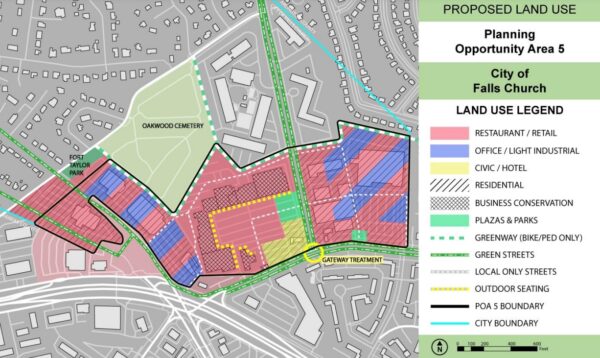
According to its website, VPC “aims to uplift and uphold the legacy of Vietnamese culture community and identity in the D.C.-Maryland-Virginia area for the next generation.” A large majority of its members hail from Fairfax County.
Currently, the group is committed to preserving Eden against the threat of displacement and gentrification that its members believe the plan poses, serving as a key liaison between the largely Vietnamese-speaking shop owners, Eden’s corporate stakeholders and the local government.
Seeing a lack of Vietnamese representation in early discussions of the plan, the group aims to bridge language barriers and facilitate community outreach to represent the needs of the community that will be most affected by the plan — a collaboration that both organizers and city staff suggested could be replicated elsewhere in the region. Read More
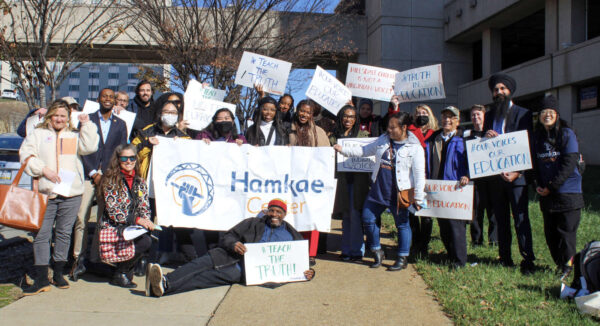
Today (Thursday) marks a decade of community service, youth leadership, political activism and civic engagement in Virginia by the Hamkae Center.
Over the last 10 years, the local nonprofit has dedicated itself to achieving “social, racial, and economic justice” through Asian American mobilization and advocacy at both the state and local levels, per its website.
“We want to not only help meet the immediate needs of Asian Americans living in Virginia, but we also want to make lasting change,” Hamkae Center Director Sookyung Oh said. “…What we really want is for Asian Americans to be actively engaged in society, in this democracy. If we can create those on-ramps for folks to be able to do that and be a political home, then that’s what we’re striving for. ”
Though it works around the state, Hamkae Center is based in Fairfax County with offices in Annandale and Centreville. Its mission has expanded alongside the local Asian American community, which has grown from 17.6% of the county’s population in 2010 to over 20% — one-fifth of the population.
“Over the years, Hamkae Center has really become much more pan-Asian,” she said. “So if you look at our staff and board, we have folks who are Korean heritage like me…but also Filipino, Indian, Pakistani, Chinese, Vietnamese, Taiwanese. It’s really expanded so that we were becoming more of an Asian American group.”
A Virginia affiliate of the National Korean American Service & Education Consortium, the group was founded in 2012 as NAKASEC Virginia with the goal of organizing with undocumented Korean Americans, according to Oh.
It was among the organizations that advocated for undocumented immigrants who attended high school in the state to be eligible for in-state tuition rates and state financial aid for college.
“It’s our work with undocumented Asian Americans that we were able to push those changes through the state General Assembly in 2020 and in 2021,” Oh said.
Oh also expressed pride in Hamkae Center’s education-related activism, including its role in leading a “statewide, multi-racial, multi-faith” movement against proposed revisions to Virginia’s history education standards.
On a more hyperlocal level, the Hamkae Center functions as a community resource, offering assistance with citizenship and public health benefit applications. According to Oh, it recently launched an Asian American Small Business Counseling program to help Korean Americans in Northern Virginia navigate complex corporate procedures and language barriers as they kickstart their own businesses.
“To date, I think we’ve supported about four entrepreneurs in starting new businesses, and that’s pretty cool,” Oh said.
To reflect its evolving focus, the group rebranded in 2021 to “Hamkae,” the Korean word for “together.” Oh says the new name aims to “honor [their] Korean American roots” while making it clearer that the organization works with all Asian Americans, not just Korean Americans. Read More
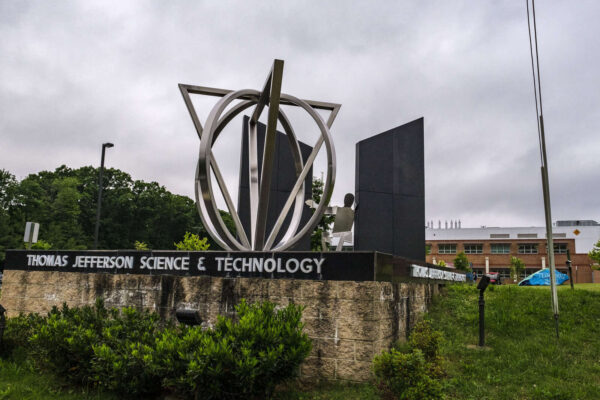
(Updated at 4:20 p.m.) The current admissions process for Thomas Jefferson High School for Science and Technology (TJ) does not discriminate against Asian American students, the U.S. Court of Appeals for the Fourth Circuit has ruled.
A majority of the three-judge panel backed the Fairfax County School Board’s argument in support of admissions policy changes intended to increase diversity at the prestigious magnet school, reversing a lower court’s ruling that sided with the Coalition for TJ.
The advocacy group filed a lawsuit against the school board in March 2021, arguing that the changes adopted in 2020 were intended to reduce the number of Asian students at TJ in violation of the Constitution.
In an opinion published today (Tuesday), Circuit Judge Robert King says the Coalition failed to prove that the school board intended to discriminate against Asian students, who have, in fact, seen “greater success in securing admission to TJ under the policy than students from any other racial or ethnic group.”
“After thorough consideration of the record and the appellate contentions, we are satisfied that the challenged admissions policy does not disparately impact Asian American students and that the Coalition cannot establish that the Board adopted its race-neutral policy with any discriminatory intent,” King wrote.
Since taking effect with the Class of 2025, the admissions changes — which included dropping a required test and application fee and taking into account a student’s economic, special education or English-learner status — have resulted in offers going to a broader range of students in terms of race, geography and income.
The Class of 2025 was the first in a decade to accept students from all middle schools. It also saw an uptick in Black, Hispanic and economically disadvantaged students, Fairfax County Public Schools reported. Both that year and last year, Asian students still received a majority of offers.
“The court reached the correct decision, and we firmly believe this admission plan is fair and gives qualified applicants at every middle school a fair chance of a seat at TJ,” John Foster, the school board’s division counsel, said in a statement. “We look forward to offering seats to a new group of remarkable and incredibly well-qualified young scholars in the years to come.”
U.S. District Judge Claude Hilton had ruled in February 2022 that Asian students were “disproportionately harmed” by the admissions changes, which he said were implemented in a “remarkably rushed and shoddy” process.
Hilton ordered that FCPS stop using the new policy, but the appeals court agreed to let it stay in place while the lawsuit continued.
While King said that Hilton’s judgment “went fatally awry” in not addressing how racial and ethnic groups other than Asians fared under the new policy, Circuit Judge Allison Rushing argued a dissenting opinion that the changes were “passed with discriminatory intent and disproportionately impact a particular racial group,” even if they appear race-neutral on paper.
“The twelve-member Board plainly stated its intention to craft an admissions policy for TJ that would reform the racial composition of the student body to reflect the racial demographics of the district,” she wrote.
The Coalition for TJ says it wasn’t surprised by the ruling and intends to take the case to the U.S. Supreme Court.
“We are disappointed by today’s ruling, but we are not discouraged,” Pacific Legal Foundation attorney Erin Wilcox, who has been representing the coalition, siad. “Discrimination against students based on their race is wrong and violates the Constitution’s guarantee of equal protection. We look forward to asking the Supreme Court to end this illegal practice once and for all.”
The Supreme Court is already considering a case on affirmative action in college admissions. Some universities have started to review their practices, with the mostly conservative justices expected to defy precedent by declaring race-conscious admissions unlawful.
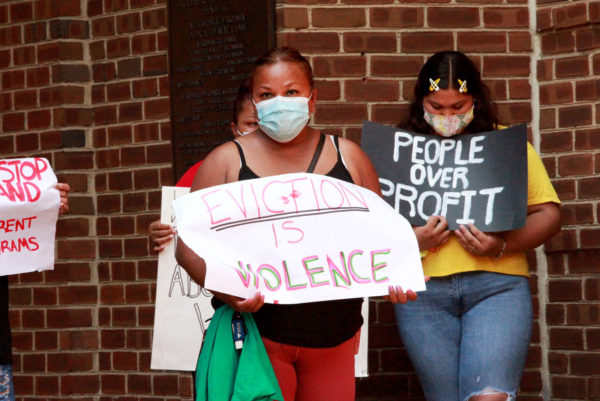
For years, Fairfax County leaders have been using carrots to encourage property owners to adhere to the county’s Human Rights Ordinance. Now, some of them want to start using the stick.
During a meeting on Tuesday (May 16) discussing the Metropolitan Washington Regional Fair Housing Plan, staff laid out how Fairfax County fits into a regional push for more affordable housing and better protections for residents.
In addition to regional goals, the plan includes specific goals for each locality in the region. For Fairfax County, that includes enforcement of the Human Rights Ordinance passed back in 2010.
The 46-page ordinance has a detailed list of prohibited forms of housing discrimination, including employment or credit, as well as protection against retaliation for filing a discrimination complaint.
Hunter Mill District Supervisor Walter Alcorn said, given that it’s been 13 years since the Human Rights Ordinance was passed, it’s high time to take the gloves off and double down on enforcement.
“We’re doing the testing, we’re identifying where we need to do more work; I’m all for that, but frankly, at some point, we have to do real law enforcement,” Alcorn said. “We’re going to have to pivot. If we’re not making progress, it’s time to take a more aggressive law enforcement stance with this. If we don’t see progress moving forward, I think we’d want to see an option for a more aggressive law enforcement approach.”
Amanda Schlener said Fairfax County publishes testing reports every two years and the most recent, from fiscal year 2022, indicated the county filed 22 enforcement complaints against private companies. Of those, 11 were settled for monetary conciliation agreements.
Fairfax County isn’t alone in seeing housing discrimination. Alexandria officials recently shared that property owners have evicted residents for receiving public assistance.
Staff also said the county could do more to let local residents know about their rights.
“Sometimes people are not 100% sure of what their rights are,” said Deputy County Executive Ellicia Seard-McCormick. “The carrot is in teaching people what we’re trying to achieve.”
Overall, the plan includes seven regional goals and eight local goals. The local goals are:
- Increase home-ownership opportunities
- Increase housing choice for voucher holders
- Deliver more affordable housing
- Preserve multi-family and manufactured units
- Increase awareness of existing and upcoming affordable homeownership and rental opportunities in communities of color and other vulnerable communities.
- Increase community awareness of Fair Housing rights by developing and providing new Fair Housing training and outreach activities.
- Enforce the Fairfax County Human Rights Ordinance through testing-initiated complaints that identify areas of concern.
- Increase the accessibility of fair housing services for individuals with disabilities and for whom English is not their first language.
The plan also has proposed actions to achieve the goals, like co-locating housing with public facilities on county-owned sites and developing closer relationships with community organizations that can help reach out to non-English-speaking communities.
“This is not the be-all, end-all of our affordable housing policy…but this document is indeed very valuable,” Board of Supervisors Chairman Jeff McKay said. “We can have the best goals in the world, but if we don’t have strategies and implementation and monitoring, we’re stuck not knowing what progress we’re making.”

An IT contractor headquartered in Reston’s South Lakes area has agreed to pay over $435,000 to settle a federal investigation that found racial discrimination in its hiring practices.
Intelligent Waves LLC allegedly engaged in “systemic hiring discrimination” against 14 Black applicants who sought work in Arizona and Nevada as test instrumentation technicians, the Department of Labor’s Office of Federal Contract Compliance Programs (OFCCP) announced Friday (April 21).
The allegations were raised by a “routine” compliance investigation that took place between Nov. 5, 2019 and Aug. 31, 2021, according to a news release.
Investigators found violations of Executive Order 11246, which prohibits discrimination by federal contractors, by personnel at the company’s Reston headquarters (1801 Robert Fulton Drive, Suite 440) who were responsible for filling the technician positions.
“OFCCP identified a statistically significant disparity (equivalent to a shortfall of five (5)), not otherwise explained, in the hiring of Black Test Instrumentation Technician applicants on the basis of their race,” the office says in the compliance agreement.
The OFCCP also found that Intelligent Waves failed to preserve accurate employment records and implement an audit system to monitor the effectiveness of its affirmative action program during the investigation period, according to the agreement.
“Our settlement with Intelligent Waves reflects our commitment to preventing hiring discrimination and holding federal contractors accountable when they fail to ensure equal employment opportunity,” Office of Federal Contract Compliance Programs Mid-Atlantic Regional Director Sam Maiden said.
Launched in 2006, Intelligent Waves provides cybersecurity, data science, network & systems engineering and software development services. Its clients include the Air Force, NASA, the Department of Veterans Affairs and the General Services Administration, according to the labor department.
Per the compliance agreement, the company “neither admits nor denies” any violations of the federal government’s nondiscrimination rules.
According to Intelligent Waves, the discrimination allegations stem from “a single position and an incident that transpired almost three years ago, resulting from a record-keeping error when Intelligent Waves was a small business.”
The company says it hasn’t employed the people involved since 2022 and started “implementing measures” to ensure compliance with federal rules as soon as it became aware of the error.
“Intelligent Waves has a long history of providing an equitable and inclusive workplace for all employees, exceeding industry averages for diversity and veteran employment, and has maintained a strong anti-discrimination policy since its founding,” Intelligent Waves said in a statement, noting that it was listed among the D.C. area’s top corporate diversity employers last year by the Washington Business Journal.
However, as part of the settlement, Intelligent Waves has agreed to not only provide $435,368 in back pay and interest to the 14 affected individuals, but also give them priority for a job offer if there are future test instrumentation technician vacancies.
The contractor is also required to evaluate its hiring policies and procedures for the position and train employees involved in hiring on any changes.
All of the settlement funds must be distributed by Feb. 20, 2024, and the company must give the OFCCP a progress report on its hiring practices by April 1, 2024, per a timeline in the agreement. The office has a Class Member Locator with information for anyone who thinks they’re eligible for relief.
Photo via Cytonn Photography/Unsplash

Fairfax County staff have pared down the draft of Reston’s proposed comprehensive plan from 180 pages to 133.
At a Fairfax County Planning Commission workshop on March 30, staff walked through their amendments to the proposed plan, a process that kicked off more than two years ago with a community-driven task force initiated by Hunter Mill District Supervisor Walter Alcorn.
The task force approved draft recommendations on Aug. 28 after 58 public meetings, significant public feedback and rigorous debate. Hunter Mill District Supervisor Walter Alcorn convened the task force after he took office in 2020.
Overall, staff’s version of the plan avoids policy and prescriptive language in specific areas, particularly land use. It also combines chapters about equity and community health — previously created by the task force as separate chapters — under the umbrella of “new town elements.”
St. Clair Williams, senior planner with the county’s Department of Planning and Development, said the change was intended to avoid language that could clash with current county policies, particularly the county’s One Fairfax policy on equity.
“There were concerns raised regarding new chapters. Was it created new policy or was it something that was exceeding current county policy?” Williams said.
Revising the community health section was challenging due to the lack of a formalized, countywide health policy that the plan could use as a basis, he said.
Hunter Mill District Planning Commissioner John Carter emphasized that staff’s edits are intended to “implement…instead of create new policy.”
“We’ve tried to emphasize the use of active verbs,” Carter said.
A road network near Association Drive was revised by staff in order to allow flexibility in the future. It now highlights that an east-west connection between Soapstone Drive and Association Drive should avoid tree areas.
The county is considering a major site-specific plan amendment (SSPA) that would redevelop the buildings on Association Drive into a mostly residential project.
Braddock District Commissioner Mary Cortina said she hoped that nomination would preserve some of the historic aspects of the site.
Other major land use decisions in Reston’s transit-oriented areas were removed from the plan. Those proposals are currently being pushed through the SSPA process, which includes several redevelopment pitches for major projects in Reston.
The plan also adds additional water retention and quality targets for new development. Other general elements related to air, climate, resiliency and invasive plant species were removed, though the new draft has sections on vegetation and “green buildings.”
Staff also revised language guiding the number of full-size athletic fields in Reston’s TSA, saying that the “equivalent of 12 fields” should be provided.
“Staff had identified some of the challenges with finding sufficient space for full-size fields,” Williams said.
No land use changes for Reston’s golf courses are recommended — a major point of contention in the community.
For affordable housing, the plan ups the bar on requirements for developers on Reston projects.
In Reston’s transit station areas, affordable housing requirements for rental workforce dwelling units (WDU) are higher than surrounding areas. In the TSAs, 12% of units should be set aside as rental WDUs — half of which should target households making between 71 and 80% of the area’s median income.
The countywide policy requires that 8% of rental units in residential developments be set aside as WDUs.
Staff will release their final version of the plan on May 11. Public hearings are slated before the planning commission on June 14 and June 28, with potential action on the latter date. Meetings are tentatively scheduled with the Board of Supervisors this month, though the schedule is subject to change.

